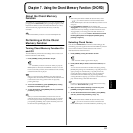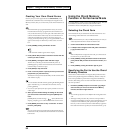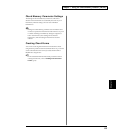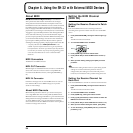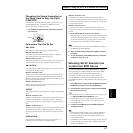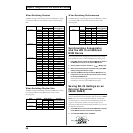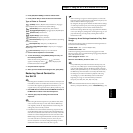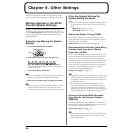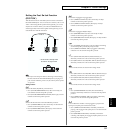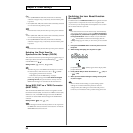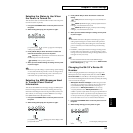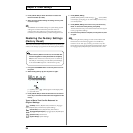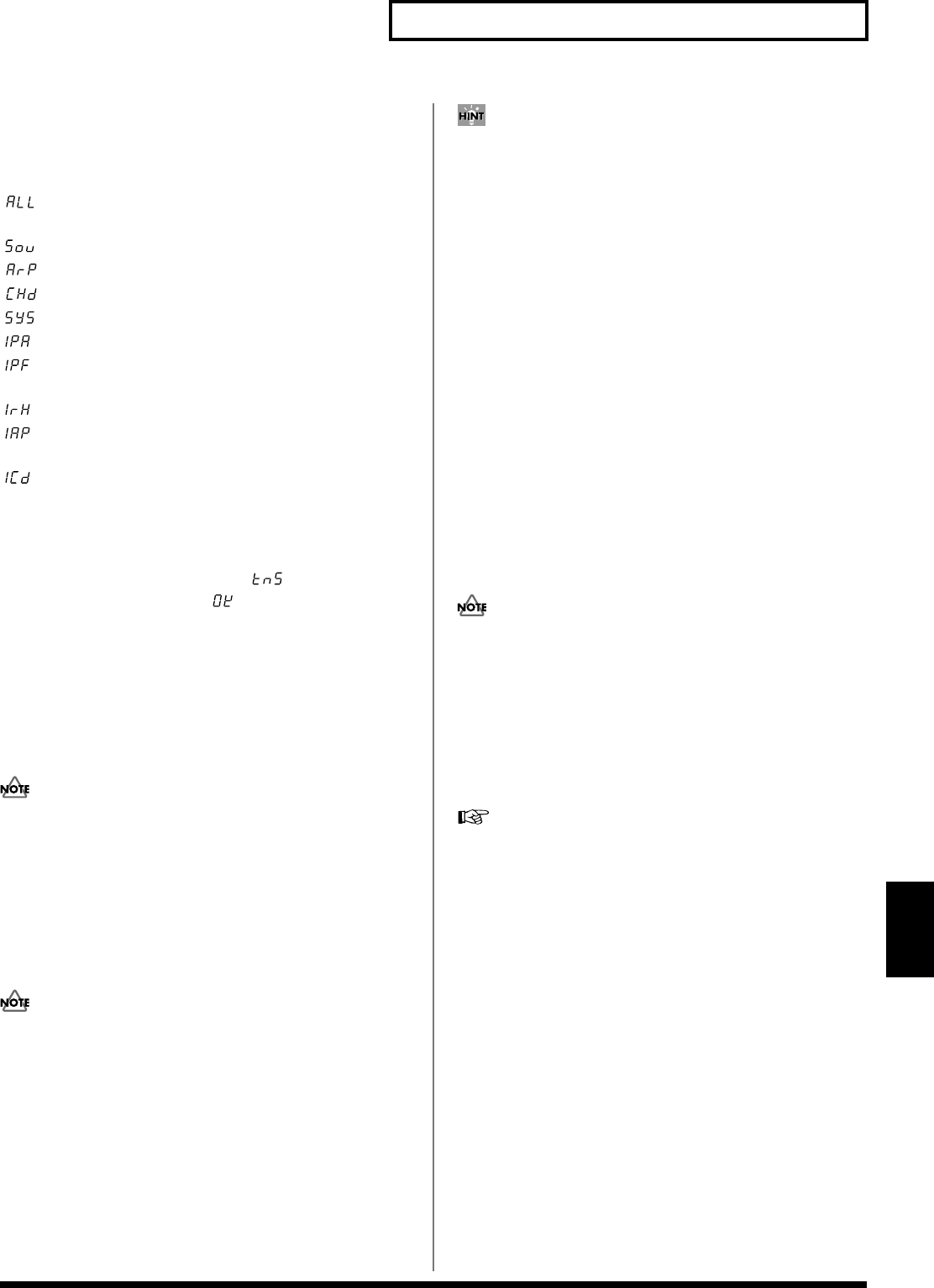
89
Chapter 8. Using the SH-32 with External MIDI Devices
Chapter 8
3. Press [8/R (BULK DUMP)] to make its indicator blink.
4. Press [VALUE ▼/▲] to select the data to be transmitted.
Type of Data to Transmit
(All Data): Patches, Rhythm Sets, Performances, Arpeggio
Styles, Rhythm Styles, Chord Forms, System Settings
(Sound Data): Patches, Rhythm Sets, Performances
(Arpeggio/Rhythm Styles): Arpeggio Styles, Rhythm Styles
(Chord Forms): Chord Forms
(System Setup): System Settings
(One Patch): Temporary area Patch
(One Performance): Temporary area Performance (including
Patches for each Part)
(One Rhythm Set): Temporary area Rhythm Set
(One Arpeggio/Rhythm Style): Temporary area Arpeggio/
Rhythm Style
(One Chord Form): Temporary area Chord Form
5. Put the external sequencer in record mode.
6. To save the settings, press [WRITE (EXEC)] and carry out
the Transmit procedure.
While the data is being transmitted, “ ” (Transmit)
appears in the display. When “ ” (Ok) is displayed, the
transmission has been completed.
7. Stop the external sequencer.
8. When you have finished transmitting the data, press [EXIT].
Restoring Saved Content to
the SH-32
Returning data to the SH-32 overwrites the data currently stored
in the SH-32, and the overwritten data is lost. However, you can
recover the data originally programmed at the factory to its
original state by carrying out the Factory Reset procedure (p. 94).
1. Use a MIDI cable to connect the SH-32’s MIDI IN connector to
the MIDI OUT connector of the external sequencer.
2. Transmit (play back) the settings from the external
sequencer.
• When using the external sequencer to play back the data, make
sure to use the same tempo as was used when the Bulk Dump
was originally carried out. If played back at a faster tempo, the
settings may not be correctly restored.
• If the SH-32’s Device ID number used during reception of data
during Bulk Dump differs from that used when the Bulk Dump
data was saved, the data cannot be received correctly. Device ID
numbers are used to distinguish devices from each other when
MIDI messages are being transmitted and received by more than
one of the same device. Normally, however, when only one
device is used, there is no need to change the setting. For more
detailed information on the Device ID, refer to (p. 93).
When recording a song to an external sequencer, record to the
beginning of the song the settings for the SH-32’s temporary area
that are needed when the song is played.
By doing this, the appropriate Patches and Performance settings
are called up to the temporary area merely by playing back the
song, eliminating the need to reselect all the Patches and
Performance settings before the song is played back. In addition,
even if you change any settings after recording the song, you can
play back the song correctly just by selecting Patch mode or
Performance mode.
Temporary Area Settings Needed to Play Back
Songs
Select from the following data as needed when selecting the data to
be transferred with Bulk Dump.
In Patch mode: “1PA” (“1rH” for Rhythm Sets)
In Performance mode: “1PF”
When the song being performed uses the Arpeggiator or Chord
Memory function, also record the following Arpeggio Style, Rhythm
Style, and Chord Form data.
When Arpeggiator is used: “1AP”
When the Chord Memory function is used: “1Cd”
If any Bulk Dump data other than that for the temporary area
(ALL, Sou, ArP, CHd, SyS) is recorded at the beginning of the
song, then the settings stored in the SH-32 (content of the User
Memory and System Memory) are overwritten by the content of
the Bulk Dump when that data is received by the SH-32. Only
the temporary area data is needed for playback of the song.
Accordingly, if you have Bulk Dump data recorded at the
beginning of a song, we recommend that you select the
temporary area data (1PA, 1PF, 1rH, 1AP, 1Cd).
For more detailed information on the temporary area, User
Memory, and System Memory, refer to “About Memory” (p. 47).



